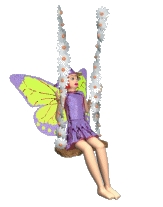The toos we are using to collect data are:
1.Classroom observation (Jimenez, 1993. Burns, 1999)
2.Video-recordings (Burns, 1999. Jimenez, 1993)
3.Survey for kids and parents (Richards, 1996. Jimenez, 1993. Burns, 1999)
4.Young learners’ documents
5.Field notes here in this blog (Jimenez, 1993. Shohamy, 2001. Burns, 1999)
6.Tests (Shohamy, 2001. Sagor, 2000. Wallace, 1999)
References
Burns, A. (1999). Collaborative action research for English language teachers. Cambridge: Cambridge University Press. (pp.152-160).
Sagor, R. (2005). The action research guidebook: A four-step process for educators and school teams. California: Corwin Press. (pp.109-136).
Jimenez, S., Marin, M. & Luna, M. (1996). Action Research Guide. COFE Series.
Selinger, H.W & Shohamy, E. (2004). Second language research methods. Oxford: Oxford University Press.
Wallace, M. (2006). Action research for language teachers. Cambridge: Cambridge University Press.
Hopkins, D. (2008). A teacher guide to classroom research. Open University Press. (Pp.115-145).
Amos, J. (2007). Early childhood qualitative research. Routledge. New York.
domingo, 25 de octubre de 2009
Suscribirse a:
Enviar comentarios (Atom)


When we had the oral presentation to share the process of data collection, our tutor and colleagues suggested us that it would be better if we reduce the tools for data collection given that there were a lot of instruments and it would make difficult for triangulation and Data analyzes. Therefore, we decided to use the following tools:
ResponderEliminar1.Video-recordings (Burns, 1999. Jimenez, 1993)
2.Survey for kids and parents (Richards, 1996. Jimenez, 1993. Burns, 1999)
3.Young learners’ documents
4.Field notes here in this blog (Jimenez, 1993. Shohamy, 2001. Burns, 1999)